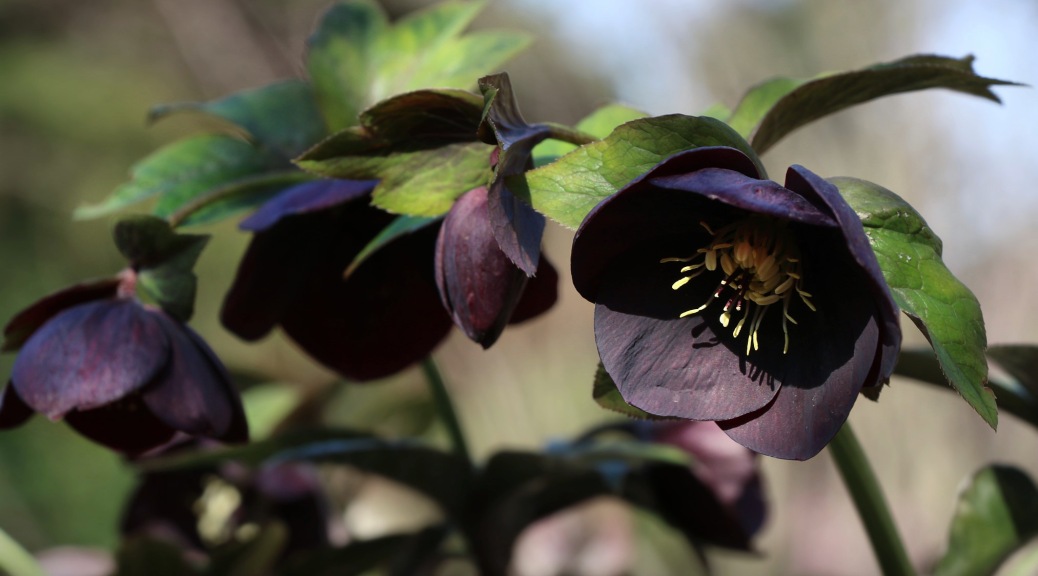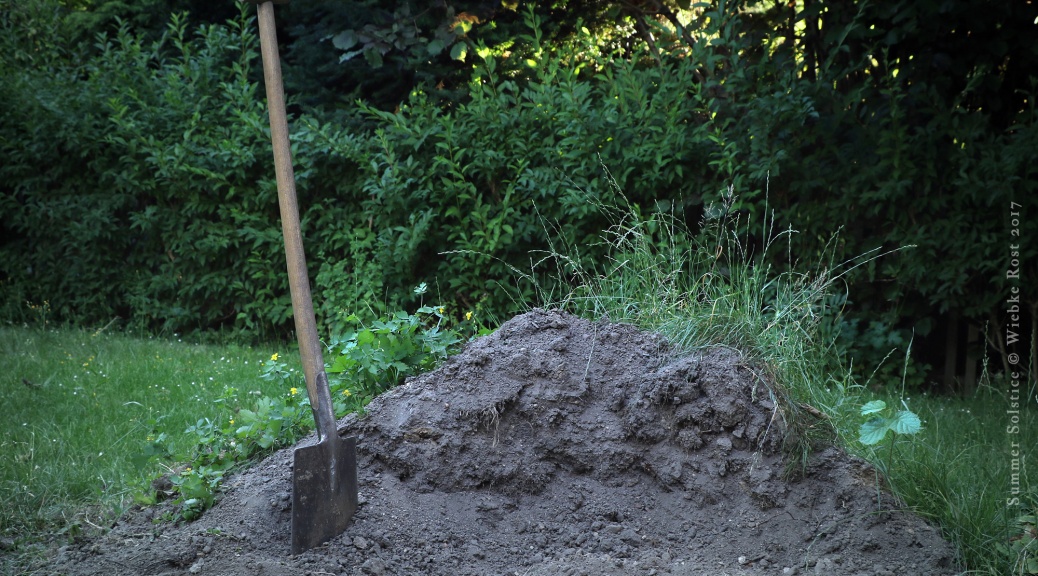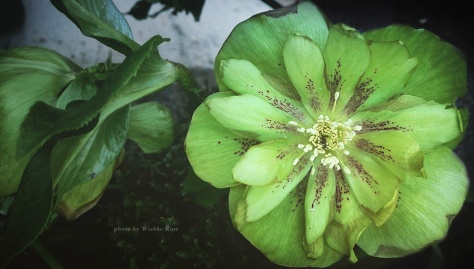Because hellebore… they come in all shapes and colors and have a growing fan base worldwide. Just use the hashtag #orientalhellebore on Instagram and you will see what I mean. Above is a selection of my own hellebore collection, including variants of oriental hellebore as well as a self-seeded stinking hellebore (Helleborus foetidus). The latter is proof that my seeds for these are indeed viable, it just took a whole 4 years . Hellebore flowers are bee-loved by pollinators and provide an early nectar source. So they do not only look nice but also serve an important purpose in the garden.
Tag Archives: hellebore
Gothic Beauty
June 2017

Summer Solstice and St. John’s, 2017
My ritual for the summer solstice took place on Wednesday morning, at 6:24 am, the time of the astronomical beginning of the summer. As the sun rose, opened also the first poppies, as if they had an inner clock set. Together with the singing of birds and buzzing of early bees frequenting the poppy flowers, I greeted the arrival of the hot season. With the smoke of the incense composed for this occasion, I blessed the new herb patches. A common redstart (Phoenicurus phoenicurus) that I had already seen a couple of times in the garden, came really close now as if to inspect my doing.
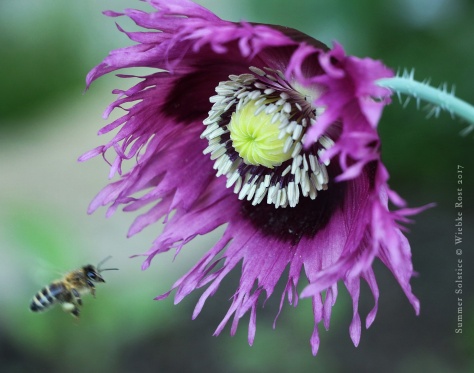
I spent the rest of the day planting henbanes and datura into the newly made bed. The following days I harvested different herbs and roots during auspicious hours, and dug up more ground to open up even more space for the herb patches, which by now feels much like a never-ending project. I was often working until dusk, but I would be in magical company…

Since the summer solstice there are little fireflies dancing around our garden at dusk. Their literal heyday happens to fall between the summer solstice and Eve of St. John (24th of June), which is why they are also known as “Johanniswürmchen” in German. It is the night, when the males can bee seen “dancing” in the air in search for a female. The male fireflies are now in their last incarnation, during which they only drink water and sustain themselves from reserves gathered during previous chrysalis stages. The females in turn are not able to fly and thus attract the males by emitting light. From this may stem the English name “glow worms”. There are many different light emitting bugs to be found all across the world. But in my location the males of Lamprohiza splendidula are the only males also capable of emitting light. The males of other firefly species in my area do not emit any light. Hence it is 100% the males of Lamprohiza splendidula when seeing fireflies dancing in the air where I live. When the males have spotted a partner they descend vertically unto the female for copulation and die shortly after. I guess that’s what you call “getting laid”! Now, before you accuse me of disturbing them in their most intimate moment; I found them on our basement steps and first did not realize that it was two mating fireflies. I wanted to secure it but also was curious which species it had here and hence took this photo and then relocated the pair to a nearby flower patch. Hoping for a new and larger generation of fireflies to frequent our garden soon!

The garden month of June
When the moon is waning, early in the morning, at the dawn of the Day of Saturn, encircle with an iron tool three times the black hellebore’s root, dig it up protecting your hands, cut it in two, keep the larger half and put the smaller one back into the soil.
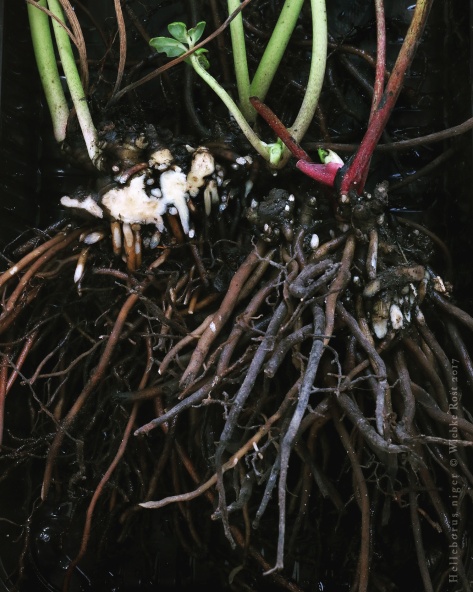
When the moon is dark, in the middle of the night of Venus and hour of Saturn, light two beeswax candles, one to the left and one to the right of the Valerian. Carefully remove some parts from the roots, which are spreading into all directions. Save a few cuttings for planting new patches of Valerian and keep the rest for drying.
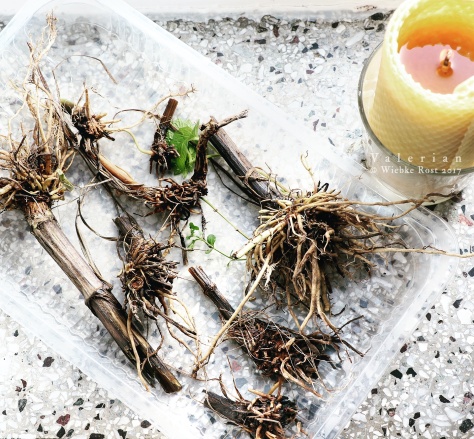
I have been growing rue in pots for years, always moving it indoors during the cold season. Now was the first time I planted one outdoors. And it gave a sorry sight after the long winter… All the more excited am I to see this very same rue plant flowering and prospering! This little bumblebee joined me.

The annual buzz concerto has returned – bumblebees of all size and couleur are busy frequenting the lush flowers of the white and purple flowering foxgloves. As they enter the flower their buzzing sound is amplified.

I recently read somewhere that monkshood and foxglove would not get along beside each other. I cannot confirm this…

Every year I am enchanted by the sight of the ghostly white flowers of the Northern wolfsbane (Aconitum lycoctonum). It is the first of the aconites to flower and set seed.
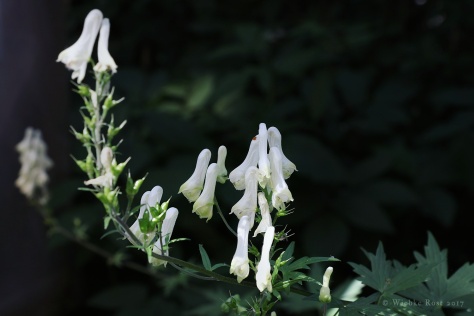
Perfect match: the flowers of blue monkshood are adopted to the physiognomy of bumblebees, the only insects able to enter the flowers…

This month came also – finally – some rain showers. Though compared to the rest of Germany and previous years, we really had the lowest amount of rain in a long time. I remember our drenched meadow from previous years, June would always be rainy. Not so this year. There were a few short thunderstorms, and relatively soft rains, with maybe 1 exception. In the face of a near blackened sky I spent one afternoon making the garden save for the announced storm, one could hear rolling thunder in the distance… and in the distance it would stay. Our rain barrels ended up only half filled.
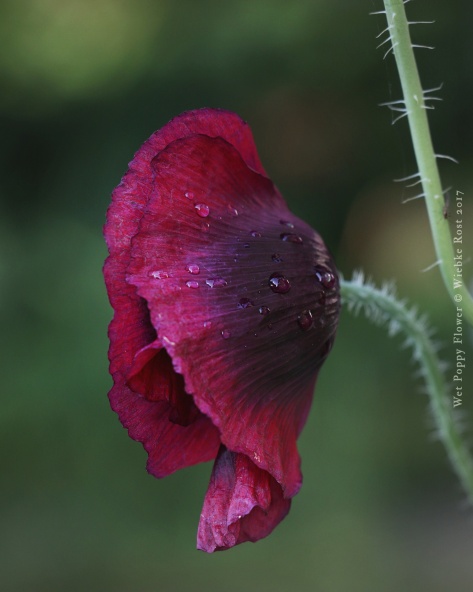
I had sown black, white and purple poppies as well as a mix of seeds. I was really surprised though about the many different colors and shapes. Basically no flower would be like the other: it’s having purple to red, purple to black, black to red, white, white to purple, filled, simple, fringed and all of these combined!
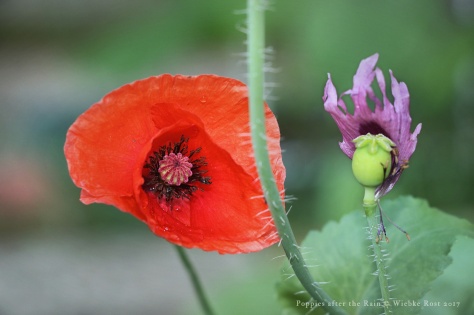
By surprise, these red corn poppies appeared in the patch were I had sown various poppy variants, which were sown in rows and accurately labeled, hehe. These must have been part of the seed mix gifted by one seller. I sure don’t mind…
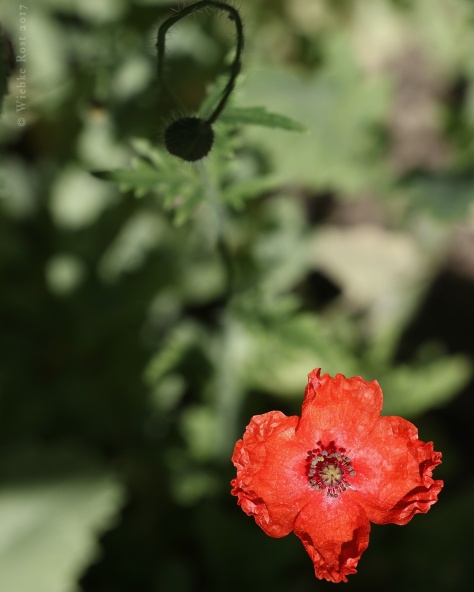
The bees, bumblebees and other pollinators are frequenting the poppies every day, as also new flowers open daily. The foxgloves, Northern wolfsbane and henbane are nearly done flowering. So are the shrubs, except for roses. Lavender has yet to start. So the poppies, rue etc. are a welcome food source.

Hover flies mimicry the look of other, more dangerous insects to confuse predators. It seems to work also when in competition for newly opened flowers, such as this lovely dark colored poppy.

Remember the bee approaching a poppy flower above? Here is the same flower, now frequented by a large earth bumblebee. Despite its size it would not dare to access before the bee had left.
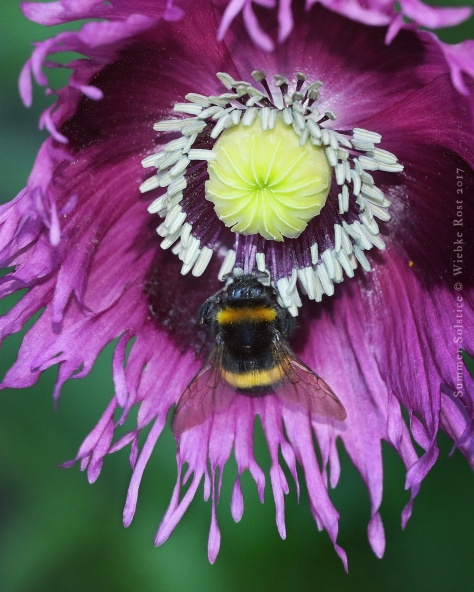
So much for them poppies. 10 days later and with the month ending, the last poppies are done flowering. In a few days from here the pods and seeds will be ripe for harvest. I will need them for my necrosophic incense of Qalmana as well as new qliphotic blends.
Preceding the summer solstice, I went to gather herbs for midsummer: mullein, viper’s bugloss, mugwort and yellow chamomile make up a lovely bouquet.

These and a number of other herbs associated with the summer time are also part of my summer solstice incense:

Last but not least, seeds sown this month: Hypericum perforatum var. ‘Tauberthal’ and some remaining Artemisia absinthium, scattered loosely into the bed. St. John’s Wort sown on St. John’s Eve. 😉
And now for a coffee break… Enjoy your summer!

May 2017

May is a tough month, both for me, as well as the green. Whilst April is still cool, bulbous spring plants are in bloom and other plants just begin sprouting fresh green, May sees the arrival of the first hot days and the green now grow and expand rapidly. It’s the first time during the year that I find myself running and watering daily. Seedlings have to be replanted and previously pricked out plants demand larger pots or have to be planted to the ground, least they wither. It’s an overall stressful period. And as I find myself plagued with pollen allergy the plants too start to suffer from various diseases: first and foremost aphids (which have been multiplying rapidly and in significantly larger amounts than in previous years), secondly black spot disease and mildew (plaguing my beloved Munstead Wood rose) and thirdly a fungus that causes leaves to crumble and roll up (this fungus infests fruit trees and is effecting our cherry tree heavily this year). So I am constantly on watch, removing aphids by hand and cutting off diseased leaves and twigs.
It’s also a month for harvest: paying attention to the moon’s phase, auspicious days and planetary hours, I dug up mandrake and greater celandine root and collected elder flowers. Further the seed capsules of the Hellebores can set free their load any day and I am of course eager to collect their seeds, especially those of the black flowering variants. Alas, ants also have an interest in the oil-rich and therefore nutritious seeds and quickly carry them away into the darkness of their underground abodes. I got serious competition… Did I mention it’s a stressful month as pertaining to the garden?
But there are also joyful moments, e.g. when the light of the evening sun shines through the flowering trees…

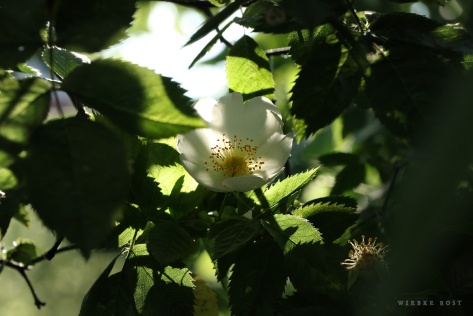
And yet there is more work to get done. My garden goals for this year include making a new flower bed beside our back porch. It’s a spot, where flowers will enjoy noon and afternoon sun during the summer. But before I can plant anything here, I first have to break up the old ground, which includes the removal of old tree roots as well as implementing a root barrier to the side of the hedge, mainly to keep the ground elder out. This part is done now. When finished with digging up the entire space and removing weed, I will blend the old soil with compost and humus-rich soil. The process thus far:
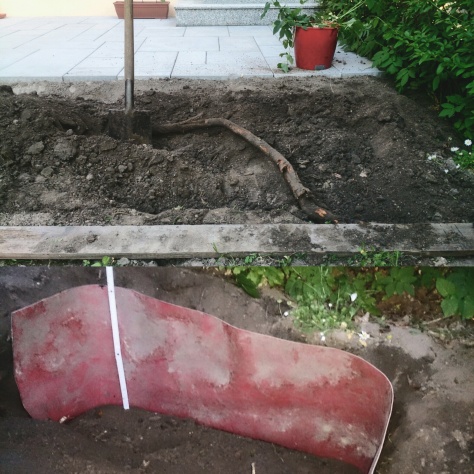
You see, it’s still a way to go for my future flower bed! But now some more impressions from the garden and recent herb harvest….
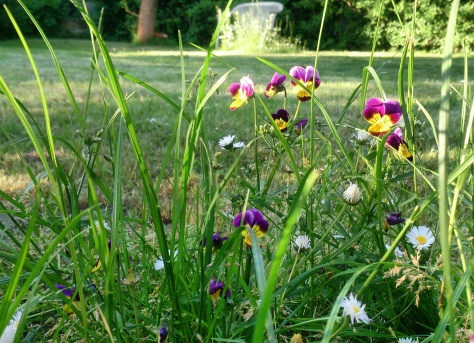
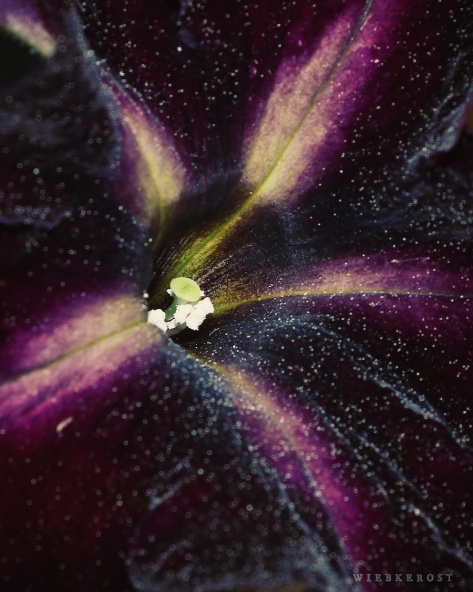




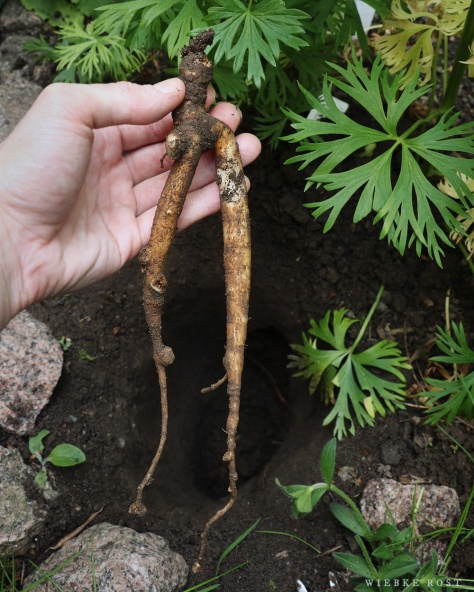
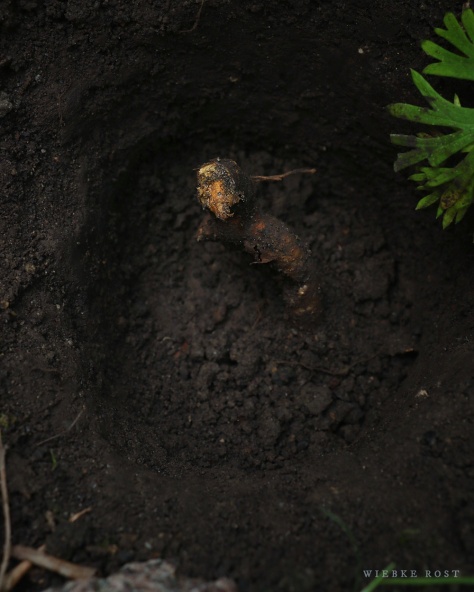


Candlemas, Februalia
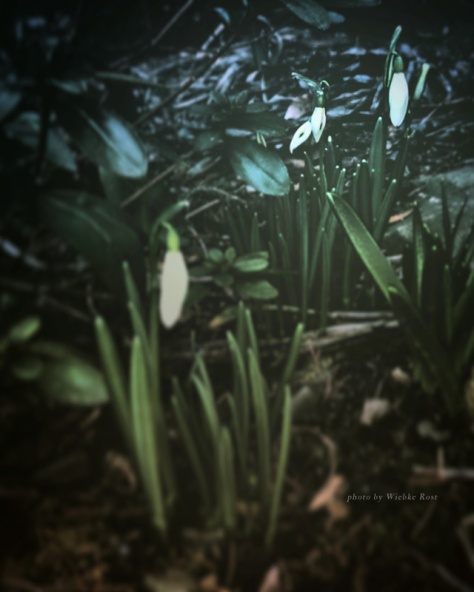
The 1st and 2nd of February respectively are associated with Imbolc, the Gaelic festival marking the beginning of spring, and Candlemas, the day, when all the Church’s candles for the year were blessed.
This time marks the midpoint of winter between the winter solstice and the spring equinox. It signals the return of the light of the sun and the days getting longer again.
Romans celebrated the Candelarum festival in honor of Persephone, who was kidnapped by Hades, and searched by her mother Demeter, bearing a torch. The return of Persephone from the underworld, signaled the return of the light and the end of the winter season. Romans lit candles and torches to drive out evil.
February, from Latin februum, meaning “purgation”, “purging”
The Roman Februalia was a festival of purification and purging, which later merged with the Lupercalia. The Latin term febris, meaning “fever”, might be related. (see)
In Jewish tradition the mother of a boy was considered impure for the 40 days following its birth (and for 60 days following the birth of a girl) and was not allowed to enter the temple. At the end of this period the mother underwent a purification ritual. This custom was incorporated into the Christian Catholic festival of Candlemas, also known as the “presentation of Christ in the Temple in Jerusalem” and the “purification of the blessed virgin Mary”.
If Candlemas Day be fair and bright
Winter will have another fight.
If Candlemas Day brings cloud and rain,
Winter won’t come again.
There is still time until the vernal equinox and the winter may still be long and cold, especially if this day is clear and sunny. A rainy and
cloudy Candlemas on the other hand means the worst of winter is over. The animals, such as bears and bumble bees, come out of hibernation for the first time. Snowdrops begin to flower, Christmas roses are in full bloom and the winter seeds begin to grow.
Now start sowing indoors those seeds that require warmth and light. The seed trays are kept on the window bench until April or until the last frosts are over. Then the young plants will be ready to be planted outdoors.
Traditional offerings: beeswax candles, Chandeleurs = pancakes (also kown as crêpes)
Animals: bear
Places: wells
Plants: snowdrops, early flowering plants
Deities: Brigid, Persephone, Father Martin (Romanian)
Rituals: cleansing and purification rituals, divination
Superstitions: If someone brings snowdrops into the house on Candlemas day it symbolizes a parting or death. Any decoration left from Christmas, such as holly twigs, should be taken down completely by Candlemas, else there would be a death among the community before the year was out.
Another tradition holds that anyone who hears funeral bells tolling on Candlemas will soon hear of the death of a close friend or relative; each toll of the bell represents a day that will pass before the unfortunate news is learned.
Sailors would not set sail on Candlemas Day, believing that any voyage begun then will end in disaster.
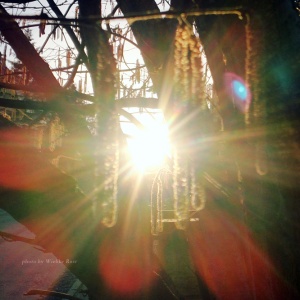
Btw. we had a very rainy and cloudy 1st day of February and tomorrow looks no different… 😉
Sources:
Candlemas + Februalia + British Culture + Folklore Calendar + BBC religions + Father Martin +
Helleborus orientalis purchased from http://www.plantacasa.de/
